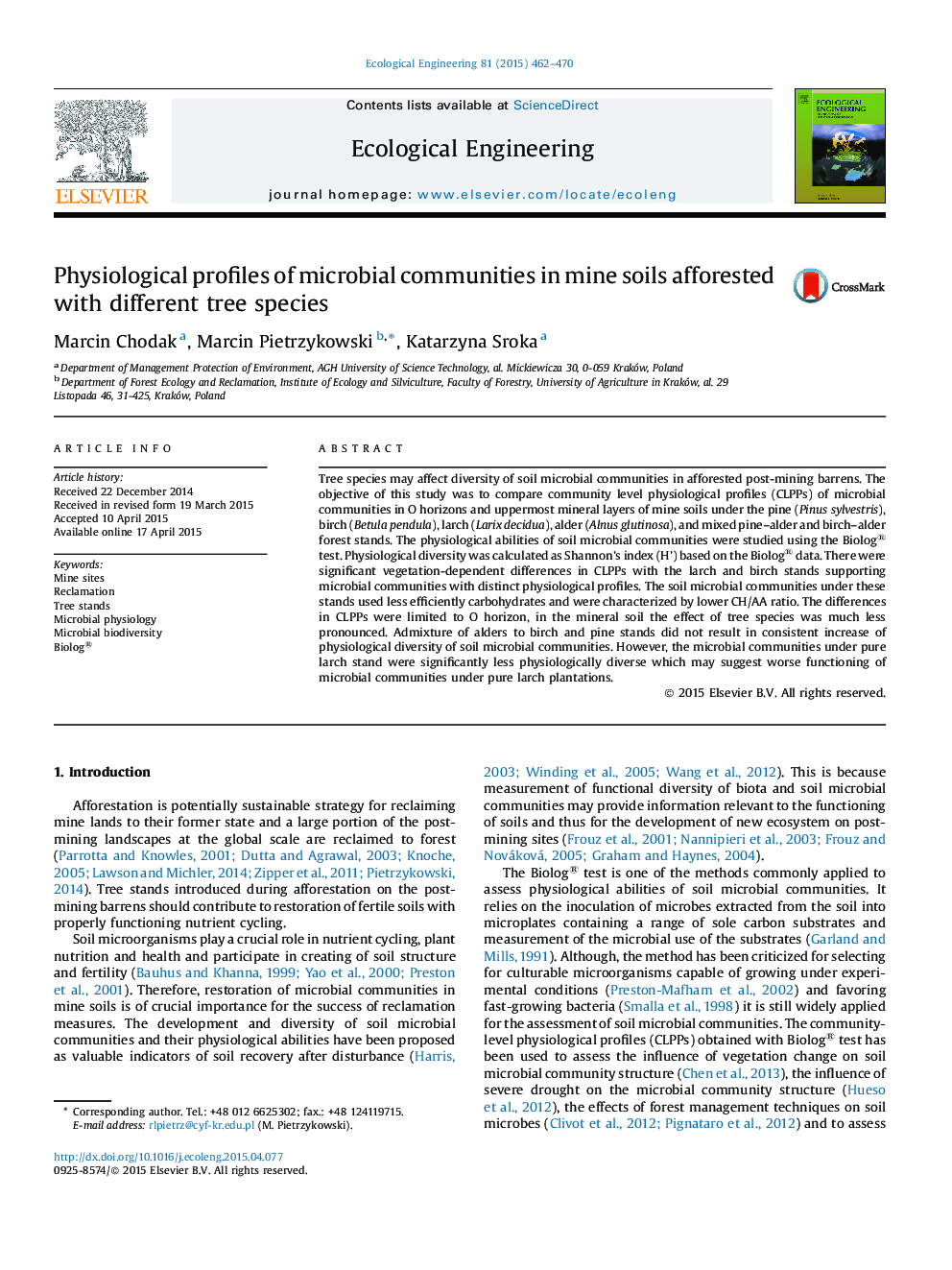| کد مقاله | کد نشریه | سال انتشار | مقاله انگلیسی | نسخه تمام متن |
|---|---|---|---|---|
| 4389104 | 1618018 | 2015 | 9 صفحه PDF | دانلود رایگان |
• Tree species affect CLPPs of microbial communities in afforested mine soils.
• Effect of tree species on CLPPs is limited to O horizon.
• Little effect of the tree species on functional diversity of soil microbes.
Tree species may affect diversity of soil microbial communities in afforested post-mining barrens. The objective of this study was to compare community level physiological profiles (CLPPs) of microbial communities in O horizons and uppermost mineral layers of mine soils under the pine (Pinus sylvestris), birch (Betula pendula), larch (Larix decidua), alder (Alnus glutinosa), and mixed pine–alder and birch–alder forest stands. The physiological abilities of soil microbial communities were studied using the Biolog® test. Physiological diversity was calculated as Shannon’s index (H’) based on the Biolog® data. There were significant vegetation-dependent differences in CLPPs with the larch and birch stands supporting microbial communities with distinct physiological profiles. The soil microbial communities under these stands used less efficiently carbohydrates and were characterized by lower CH/AA ratio. The differences in CLPPs were limited to O horizon, in the mineral soil the effect of tree species was much less pronounced. Admixture of alders to birch and pine stands did not result in consistent increase of physiological diversity of soil microbial communities. However, the microbial communities under pure larch stand were significantly less physiologically diverse which may suggest worse functioning of microbial communities under pure larch plantations.
Journal: Ecological Engineering - Volume 81, August 2015, Pages 462–470
